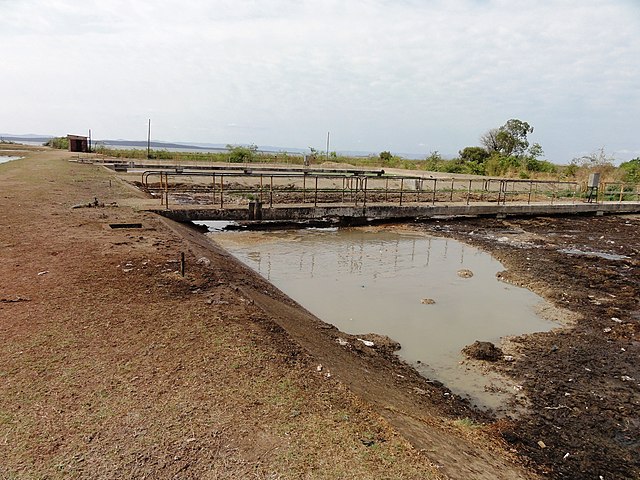Organisms involved in water purification
Most organisms involved in water purification originate from the waste, wastewater or water stream itself or arrive as resting spore of some form from the atmosphere. In a very few cases, mostly associated with constructed wetlands, specific organisms are planted to maximise the efficiency of the process.
A flowering water-purifying plant (Iris pseudacorus)
A water-purifying plant (Iris pseudacorus) in growth after winter (leaves die at that time of year)
Waste stabilization ponds are ponds designed and built for wastewater treatment to reduce the organic content and remove pathogens from wastewater. They are man-made depressions confined by earthen structures. Wastewater or "influent" enters on one side of the waste stabilization pond and exits on the other side as "effluent", after spending several days in the pond, during which treatment processes take place.
Waste stabilization pond at Grand Agadir, Morocco (Station M’zar)
Effluent from a high rate algae pond and two maturation ponds in Attaouia, Morocco. Note the green color, caused by algae.
A poorly maintained anaerobic treatment pond in Kariba, Zimbabwe (sludge needs to be removed)
Main configurations of waste stabilization pond systems






